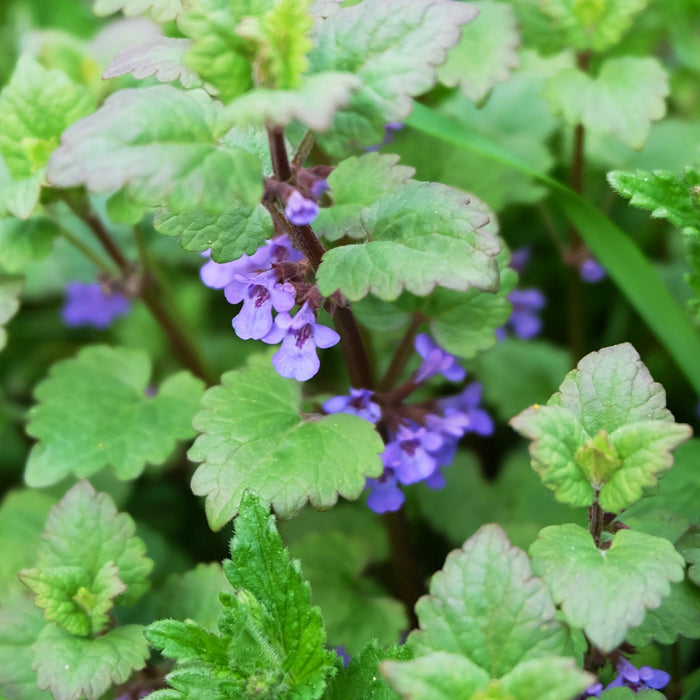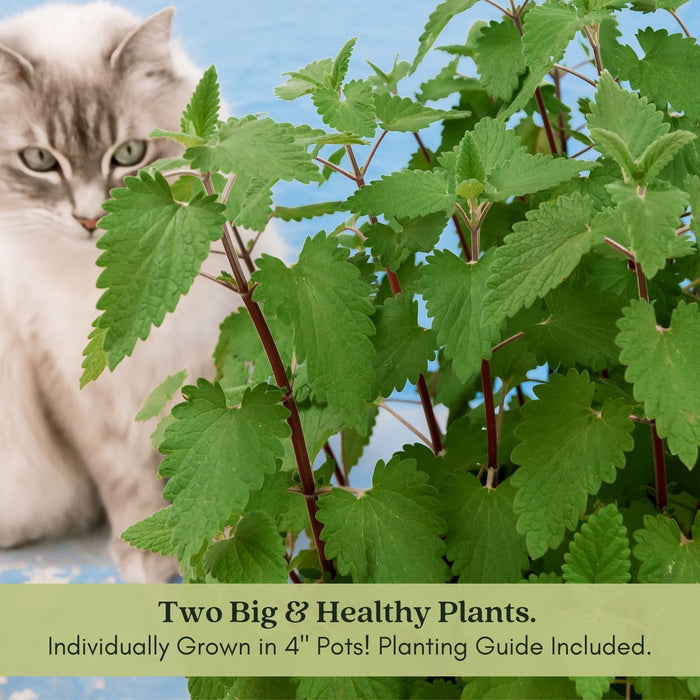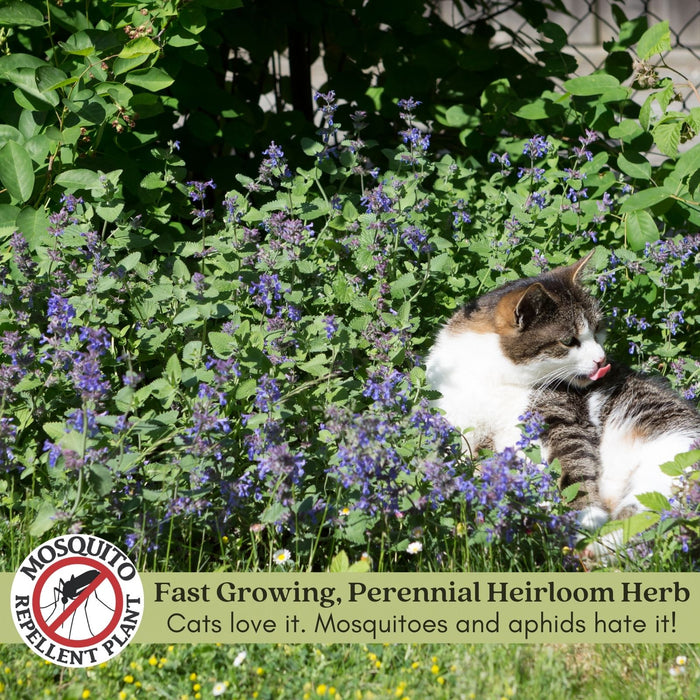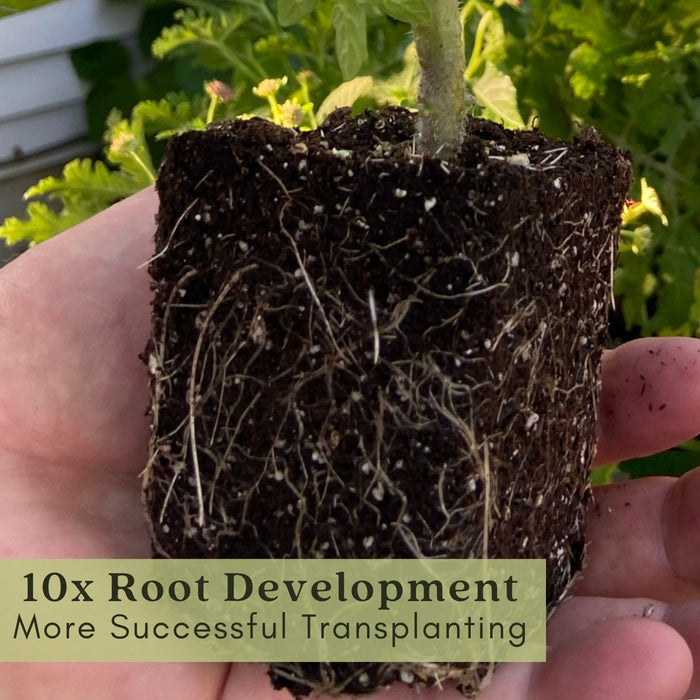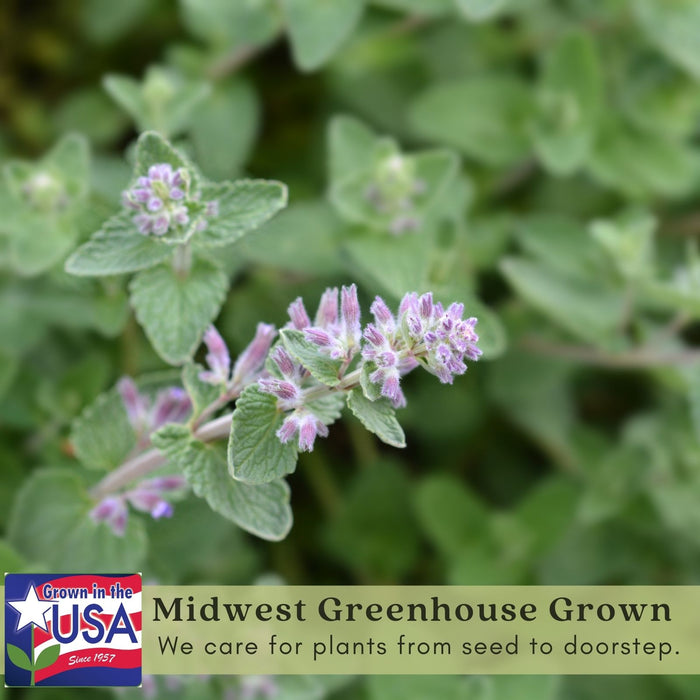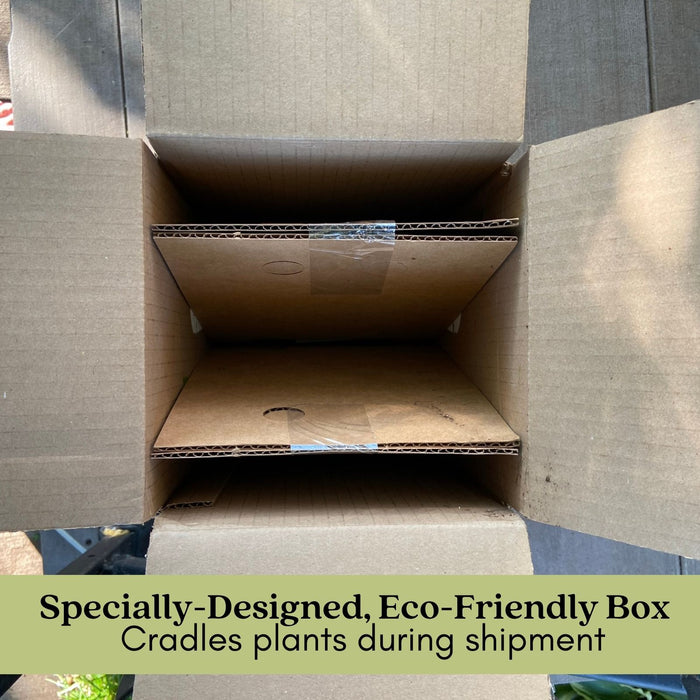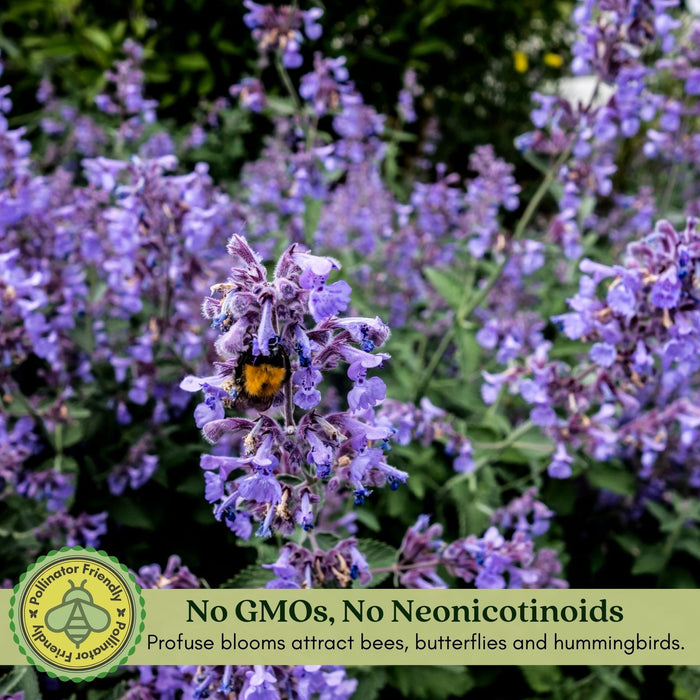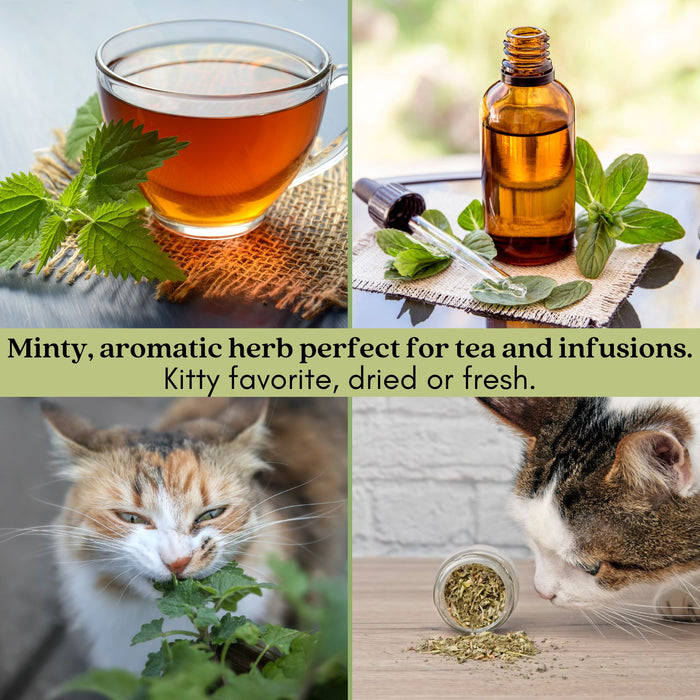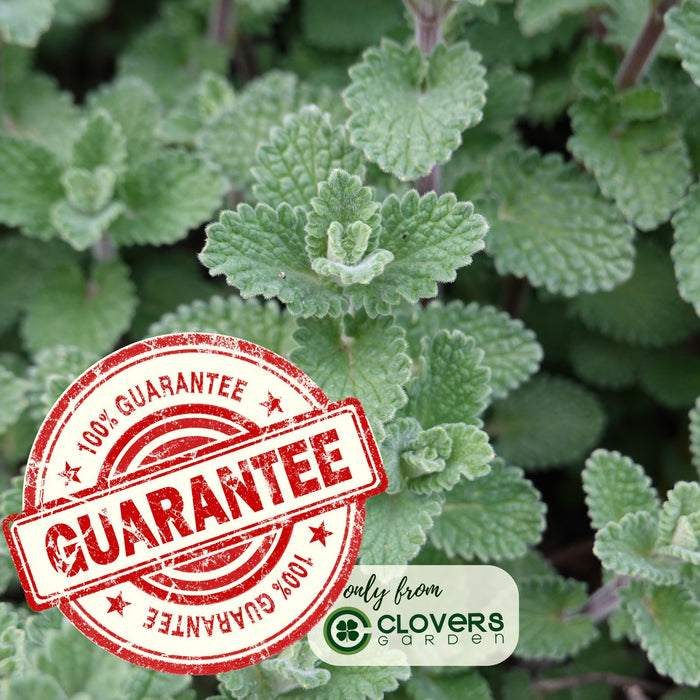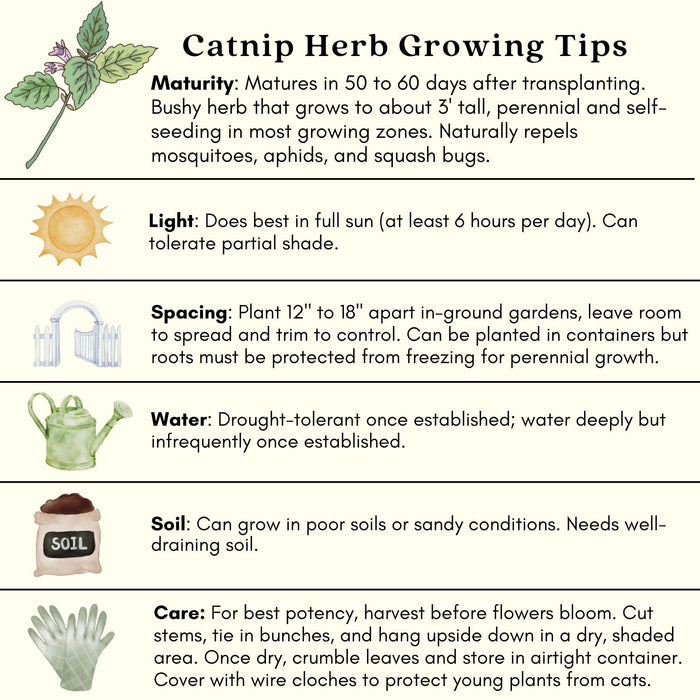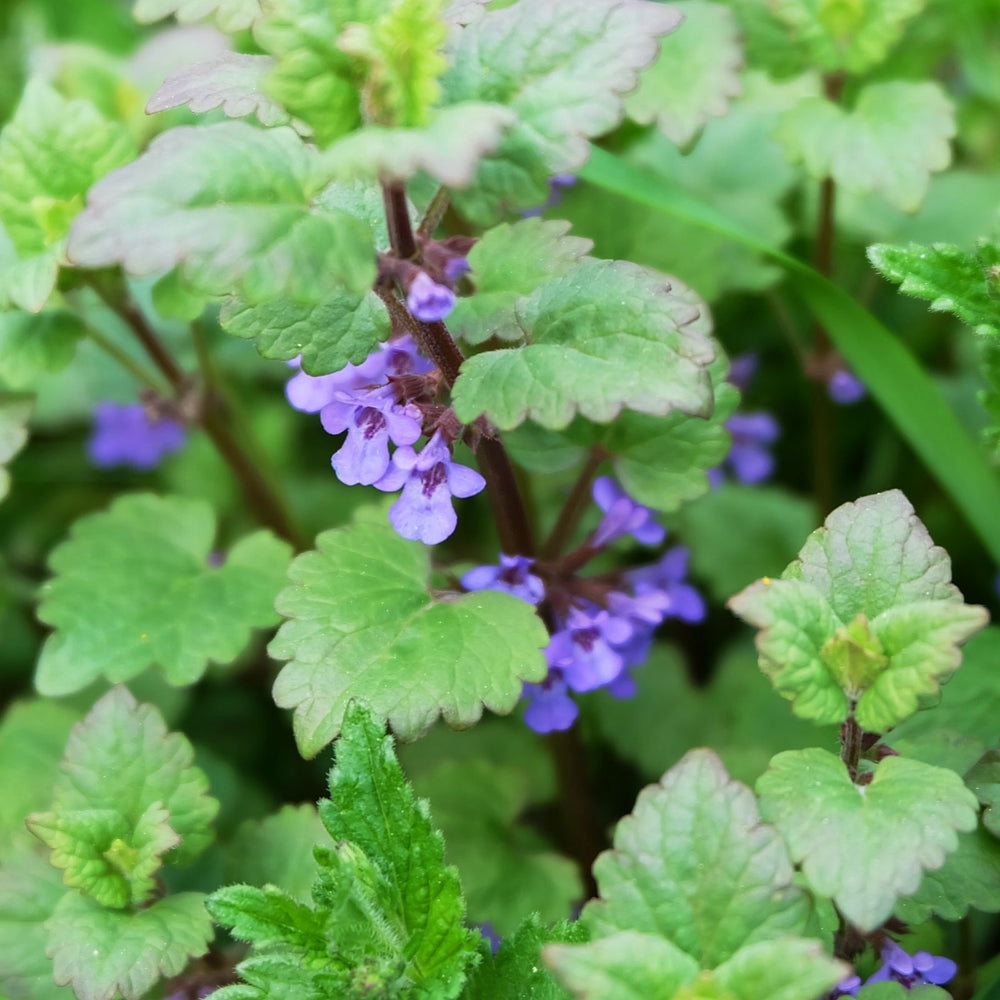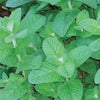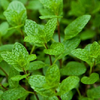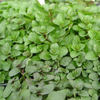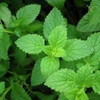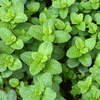Catnip Herb | Two Live Plants | Non-GMO | Heirloom | Fast Growing, Pollinator Friendly
Pre-orders are now open!
Shipping starts in early April 2026, weather permitting.
We will send you a notification before shipping.
Catnip is a fast-growing heirloom herb, loved by cats and gardeners alike for its aromatic, soft gray-green leaves and delicate, pollinator-attracting flowers. This low-maintenance, high-yielding herb produces minty-scented leaves that cats adore, while also offering soothing herbal benefits for teas and natural remedies. When in bloom, its lavender or white flowers attract bees, butterflies, and hummingbirds, making it an essential addition to any pollinator-friendly garden.
Exceptionally resilient and easy to grow, Catnip thrives in garden beds, raised beds, and containers, reaching 2-3 feet tall with lush, bushy growth. It flourishes in warm and cool climates, is drought-tolerant, and readily self-seeds for future seasons. Whether you're growing it for your feline friends, for tea, or to support pollinators, this versatile, multi-purpose herb is a valuable addition to any garden.
Clovers Garden Catnip Herb Plants:
- Two Large, Live Plants – Ready to grow, premium-quality catnip, 4” to 8” tall, in 4” pots.
- Non-GMO, No Neonicotinoids – Grown without harmful chemicals to support pollinators and ensure pure, natural greens.
- Aromatic & Edible Leaves – Minty, fragrant leaves excite cats and can be used for homemade teas and natural remedies.
- Fast-Growing & Self-Seeding – This low-maintenance herb naturally self-seeds, ensuring future growth year after year.
- Thrives in Gardens & Containers – Adaptable growth makes it ideal for garden beds, raised beds, and patio planters.
- Drought-Tolerant & Hardy – Flourishes in poor soils and dry conditions, making it a carefree addition to any garden.
- Grown in the Midwest – All plants are grown in the USA, and we oversee the entire process from seed to shipment.
- Fast Shipping & Careful Packaging – Your plants arrive quickly in our eco-friendly, 100% recyclable packaging to protect your plants and the planet.
- Quick Start Planting Guide – A copyrighted growing guide walks you through every step, from unboxing to planting.
- Third Generation, Family-Owned Small Business – Helping gardeners since 1957 with high-quality plants grown in the Midwest.
- 100% Satisfaction Guaranteed
Catnip Herb - Fun Fact:
Most famously known for driving cats wild, catnip’s allure comes from an oil called nepetalactone, which mimics feline pheromones. Interestingly, humans also used catnip tea historically as a calming herbal remedy to soothe nerves and relieve headaches.
How to Grow and Care for Catnip Herb:
- Sunlight – Thrives in full sun (6+ hours daily) but tolerates partial shade.
- Soil – Prefers well-draining soil, even in poor or sandy conditions.
- Watering – Drought-tolerant once established; water deeply but infrequently.
- Spacing – Plant 12-18 inches apart to allow for sprawling growth.
- Growth & Harvest – A self-seeding perennial, producing continuous leaves and flowers all season. Harvest young leaves for fresh use and flowers to encourage more blooms.
- Pest Prevention – Naturally repels aphids, squash bugs, and mosquitoes while attracting beneficial pollinators.
Common Questions About Catnip Herb:
How do you grow Catnip Herb? Plant in full sun with well-draining soil, water sparingly once established, and enjoy its fast-growing, self-seeding nature.
How do I prevent my cat from destroying my Catnip plants? Place wire cloches or garden fencing around young plants until they are well-established. You can also grow some in hanging baskets or elevated pots for easier control.
Can Catnip help repel mosquitoes and other pests? Yes! Catnip naturally repels mosquitoes, aphids, and squash bugs, making it a great companion plant for vegetables and herbs.
Does Catnip come back every year? Yes! Catnip is a perennial in most climates, returning annually and self-seeding for even more future growth.
Can Catnip be grown in containers? Yes! Though it thrives in garden beds, it also grows well in large containers with well-draining soil.
How big does Catnip Herb get? This bushy herb reaches 2-3 feet tall, producing lush growth and fragrant leaves.
What does Catnip smell and taste like? The leaves have a minty aroma and mild herbal flavor, making them perfect for teas and natural remedies.
How long does it take to harvest Catnip? Matures in 50-60 days from transplanting, with continuous harvesting of leaves and flowers all season.
How do I harvest and dry Catnip? For best potency, harvest before flowers bloom. Cut stems, tie them in bunches, and hang upside down in a dry, shaded area. Once dry, crumble leaves and store in airtight containers.
What are other names for Catnip Herb? Catnip is also known as Catmint, referring to its mint-like scent and family relation to the mint plant. Other names include Field Balm and Nepeta, highlighting its medicinal and pollinator-friendly benefits.
What are the best companion plants for Catnip? Certain plants benefit from Catnip’s pest-repelling properties and pollinator attraction. The best options include:
- Tomatoes & Peppers – Repels aphids and squash bugs.
- Lettuce & Cabbage – Deters common pests like flea beetles.
- Beans & Carrots – Encourages healthy growth and maximizes space.
- Lavender & Rosemary – Enhances herb garden diversity while repelling mosquitoes.
Pollinator & Pest-Repelling Benefits of Catnip - Catnip is a pollinator-friendly herb, producing small, nectar-rich flowers that attract bees, butterflies, and hummingbirds. Its natural pest-repelling properties make it a valuable companion plant, deterring mosquitoes, aphids, and squash bugs while supporting a healthy garden ecosystem.

